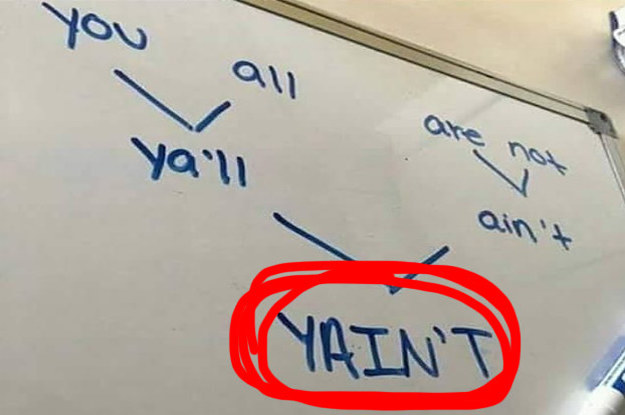Three women have accused the celebrity astrophysicist of sexual advances, unwanted touching, and rape.

via BuzzFeed/Travel


















The post What Do Your Blog Post Titles Say About Your Brand? appeared first on ProBlogger.
 This is a post by ProBlogger writing expert Ali Luke
This is a post by ProBlogger writing expert Ali Luke
If you’ve been reading ProBlogger for a while, you probably know the basics about writing blog post titles such as:
Using these guidelines, you’ll end up with titles that do an excellent job of “selling” your post to your audience. Take a look at some recent posts on ProBlogger for good examples:
However, one thing that might be missing from your title is a sense of your brand. This can be an issue when you see a title you love on someone else’s blog and try to use a variation of it on your own site. What if it doesn’t really fit your own voice and style?
Here are six titles from very different publications:
These are all good titles – if used in the right context.
Each of them hooks the reader in some way and gives a clear indication of the content of the piece.
Just looking at the list, you can draw conclusions about not only the type of article you’re about to read but also the brand publishing it.
For instance, The Guardian is a serious UK newspaper. I’ve never seen them publish a headline like the EMGN one. If they did, their readers would probably think it was a prank or a successful hacking attempt.
Let’s take a closer look at how they work.
You’ve probably seen quite a few of these titles. (They were everywhere a couple of years ago.) They all follow a specific format: a total number of items, followed by “(item number) will [astonish/amaze/surprise/etc] you”.
The formula works: it’s cleverly designed to pique the reader’s curiosity. But it also brands the site in a particular way. It can seem like a cheap trick, and be associated with low-quality writing.
If you want to try this on your own blog, I suggest using it with caution (and perhaps toning it down just a notch by using something like “amazing” instead of “unbelievable”).
While most Cracked titles have a fairly standard format, I picked this one because of the word “noped”. If a title uses something slangy (especially slang associated with a particular age group), it’s a strong clue to readers about the intended brand and audience.
Even if you’ve never used the word “noped” it’s fairly clear what it means from the context, and suggests a post that will be cheerfully irreverent.
By all means use slang (or even swear words) if they’re a good fit for your audience and, most importantly, your own voice. Don’t use them just to look cool.
This is a typical Buzzfeed post title. (Other examples include If You Own 23/33 Of these Products Then You Should Be A Beauty Guru and If You Get 9/13 On This Nursery Rhyme Quiz Then You’re Probably Four Years Old.)
It does a couple of clever things:
As well as encouraging the reader to click, it also encourages them to share the post (and their score) with their friends on social media.
BBC News headlines tend to be short – between five and eight words – so they fit easily in their sidebar. They also frequently use quotes from someone within the article. Five of the six words in this headline are within quotation marks, which isn’t uncommon.
Whether or not you like the technique (some writers aren’t keen), it does allow them to create short, powerful headlines without risking being accused of bias. (They’re required to be impartial in their reporting.)
Whatever your brand, you could experiment with using short quotes in your post titles and see if it increases the attention they get.
This title comes from the Guardian’s “opinion” section, which functions a bit like a multi-author blog. In fact, most of the headlines there sum up the argument or key point of the article.
This stands in clear contrasts to the headlines on Buzzfeed and EMGN, where the whole point is to “tease” the article. But it positions the Guardian as a place for serious journalism and quality, thoughtful writing.
You might also notice the Guardian uses sentence case rather than title case for the title, as does the BBC. This is a stylistic decision and perhaps lends itself to titles that can also work as sentences. (Sentence case for titles/headlines is also more common in the UK than in the US.)
This is a simple, straightforward title. But it works well in the context of Daily Writing Tips, which uses a lot of similar titles (especially in the “grammar” category). A short, clear title such as this promises a post that’s authoritative and complete.
On some blogs it would make sense to jazz up the title (e.g. “The Ultimate Guide to All the Functions of the Apostrophe”). But that wouldn’t suit Daily Writing Tips’ calm and slightly academic voice and style.
If you use a title such as this on your own blog, make sure you can deliver on the promise you make in the title. The post will need to be well-informed and comprehensive if you don’t want to risk losing your readers’ trust.
We’ve taken a look at six very different titles from six very different publications. Can you imagine any that would fit on your own blog, or that definitely wouldn’t work for your voice and your audience? Or do you have a different way of styling and branding your titles?
Share your thoughts and ideas in the comments below.
Image credit: Pineapple Supply Co.
The post What Do Your Blog Post Titles Say About Your Brand? appeared first on ProBlogger.

